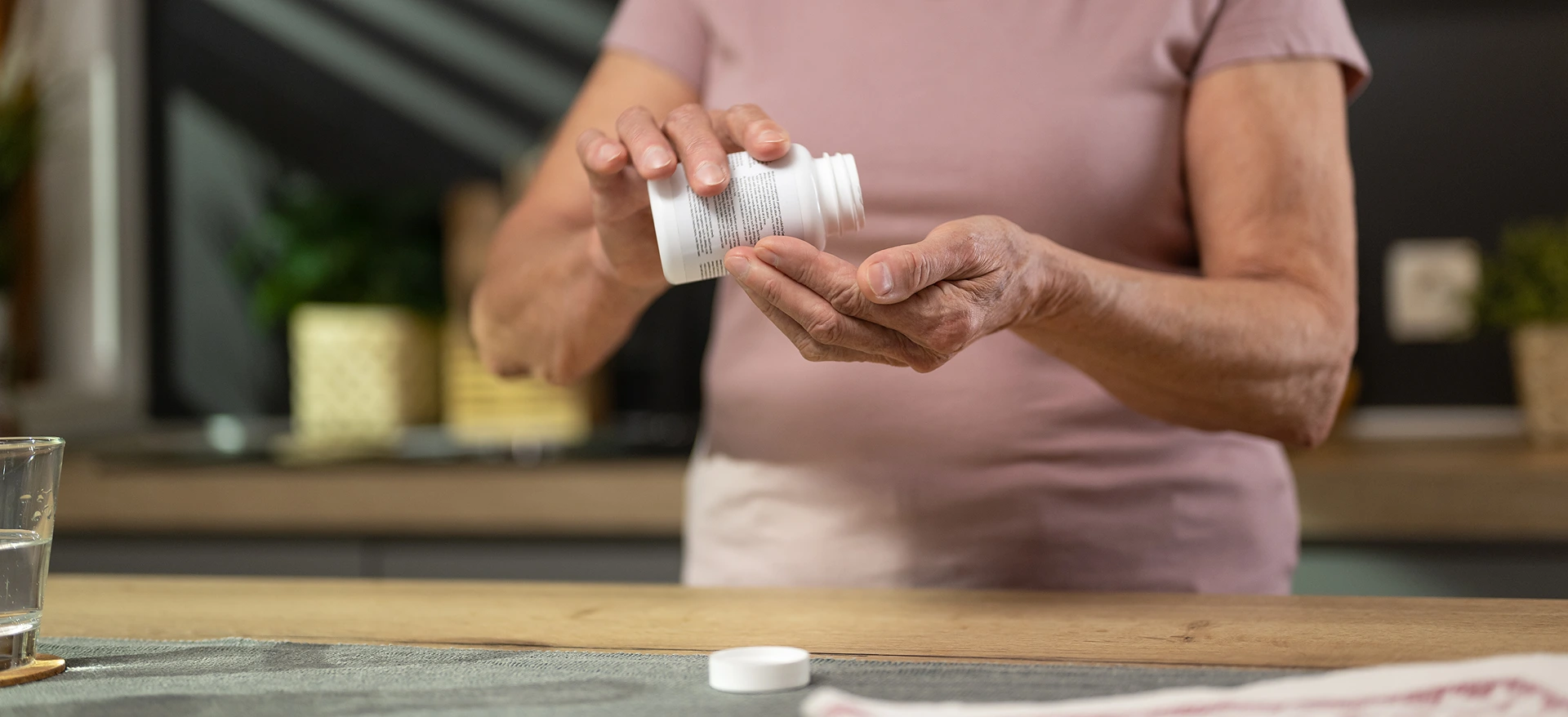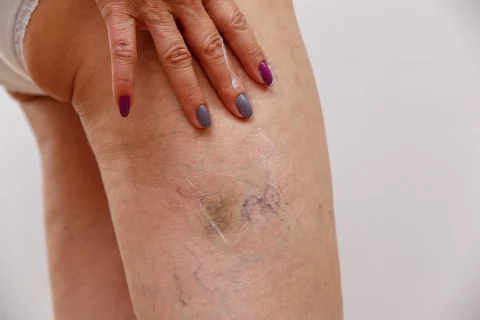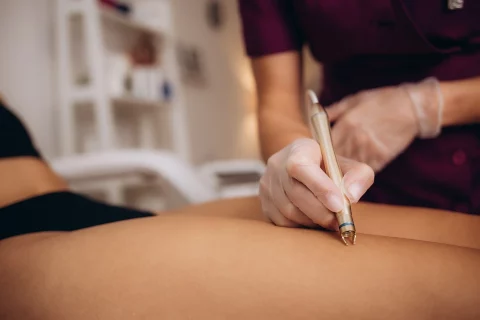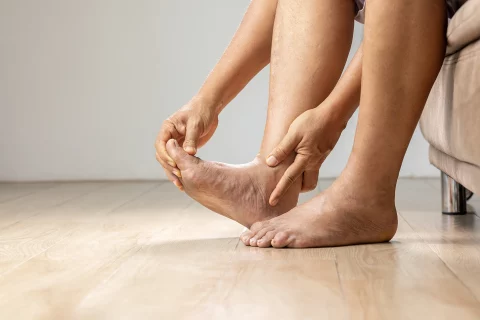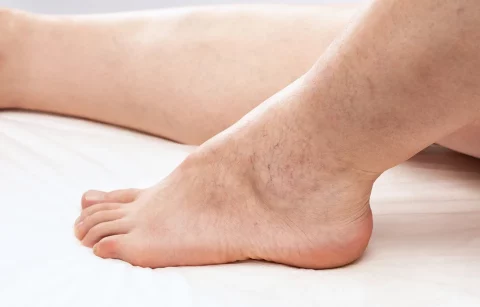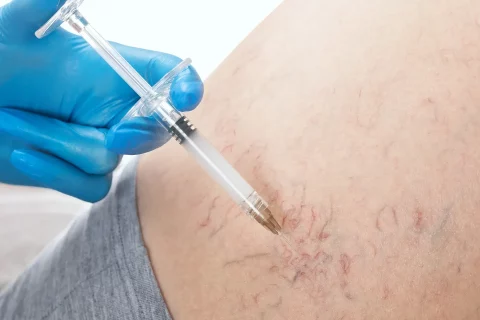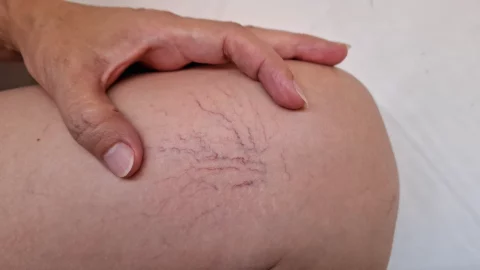Effective OTC Options to Improve the Appearance of Spider Veins at Home
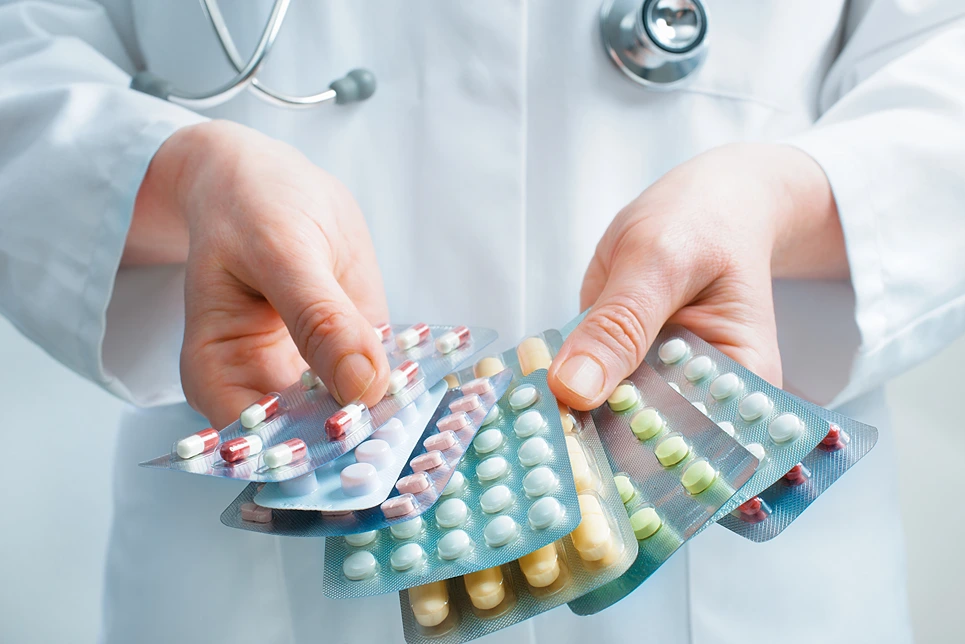
Spider veins are small, visible blood vessels near the surface of the skin. Over-the-counter creams, compression stockings, and supplements may help improve the appearance of spider veins, but medical procedures are usually needed to remove them completely.
Is your skin marred by a web of unsightly spider veins? You’re not alone – it’s estimated that 22 million women and 11 million men between the ages of 40 to 80 years in the U.S. are plagued by these thin, reddish blemishes. While invasive treatments can eliminate spider veins, many people want an affordable, convenient solution to improve the appearance of spider veins at home.
Discover proven over-the-counter treatments that reduce the appearance of spider veins without breaking the bank. Learn about different OTC options, proper usage for maximum results, and lifestyle tips that enhance outcomes.
With the right products and techniques, you can minimize the look of spider veins and regain confidence in your skin. Find out how to defeat spider veins with accessible, at-home solutions.
Living with unwanted veins is a thing of the past, when you can simply schedule a free consultation with Vein Center Doctor and find your ideal solution today.
What Causes Spider Veins?
Before exploring OTC spider vein treatments, it helps to understand what causes them in the first place. Spider veins develop when the one-way valves inside the veins become damaged or weak.
These valves are responsible for ensuring blood flows properly back to the heart. When they stop working correctly, some blood can flow backwards and pool inside the veins, causing them to enlarge and become visible under the skin.
Some contributing factors and risk factors for spider veins include:
| Weak or damaged valves | The one-way valves in veins may fail, allowing blood to flow backward and pool, leading to the enlargement of these vessels. |
| Genetic predisposition | A family history of spider veins increases the likelihood of developing them. |
| Hormonal changes | Events such as puberty, pregnancy, and menopause can influence the development of spider veins due to hormonal fluctuations. |
| Increased abdominal pressure | Conditions that elevate pressure in the abdomen, such as obesity or prolonged standing, can contribute to the formation of spider veins. |
| Lack of physical activity | Sedentary lifestyles can exacerbate the risk of developing spider veins. |
| Skin irritation or inflammation | Previous injuries or exposure to ultraviolet rays may also play a role. |
Women tend to develop spider veins more frequently than men, likely due to hormonal influences. Spider veins also become more common with age as the veins weaken over time.
Speak with our vein care experts to learn more about what causes spider veins and how we can help reduce their appearance
How OTC Treatments Can Help Improve Spider Veins
While OTC treatments don’t eliminate spider veins completely, they can significantly reduce their appearance by:
- Strengthening blood vessels to reduce further damage
- Improving circulation and blood flow
- Reducing inflammation and vein irritation
- Diminishing discoloration and redness
- Tightening and toning vein walls
- Lightening spider veins so they blend with the skin better
OTC Solutions for Reducing the Appearance of Spider Veins
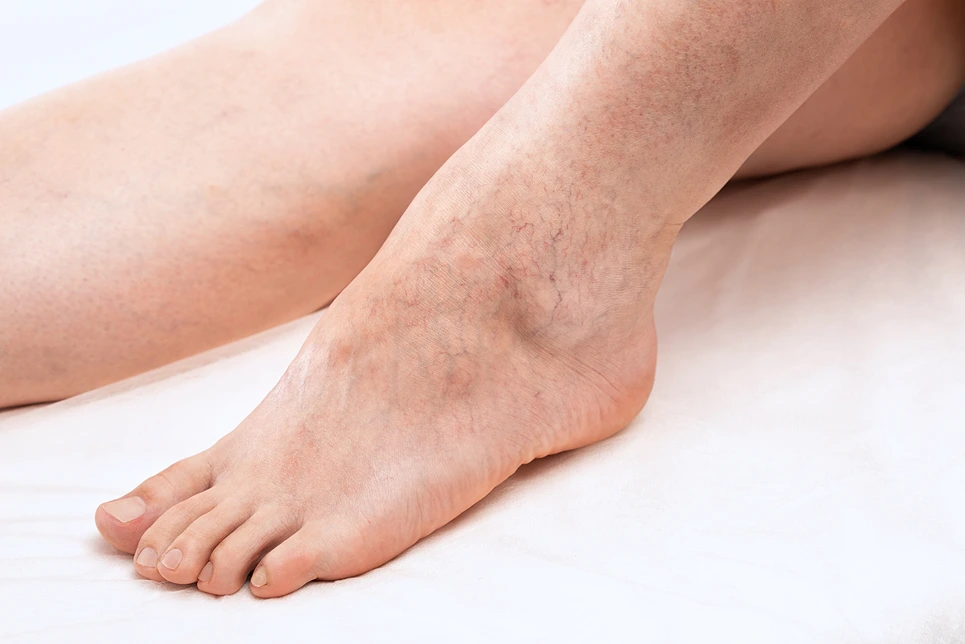
There are several affordable over-the-counter products available that can help minimize the look of spider veins. These include:
1. OTC Creams and Gels
One of the most widely used OTC treatments for spider veins are topical creams, gels, and serums made from natural extracts and active ingredients.
Some common formulations include:
| Horse Chestnut Extract | Contains aescin, which may help strengthen blood vessels and improve circulation. |
| Witch Hazel | Has soothing, anti-inflammatory, and vein-tightening effects. |
| Grape Seed Extract | A source of antioxidants that can strengthen blood vessels. |
| Pine Bark Extract | Helps improve microcirculation and may reduce the appearance of varicose veins. |
| Ginkgo Biloba | May improve blood flow and has anti-inflammatory effects. |
These natural ingredients are combined in creams, gels, or serums and applied directly to the skin 1-2 times per day. The active compounds get absorbed into the skin and work to improve the appearance of spider veins from the outside-in.
While these topical treatments don’t eliminate spider veins permanently, they can significantly reduce their visibility. Results tend to be gradual over 2-3 months of consistent use.
2. Compression Stockings
Compression stockings are elastic garments that gently squeeze the legs to improve circulation and blood flow. While often used to treat varicose veins, compression stockings can also be beneficial for spider veins.
The gentle pressure applied by compression stockings helps move blood through the veins more efficiently to reduce pooling. This decreases pressure and inflammation that worsens the appearance of spider veins.
Compression stockings are rated based on the compression strength provided:
- Light (8-15 mmHg) – Provides basic support to improve comfort and reduce fatigue. Best for spider veins.
- Moderate (15-20 mmHg) – Applies more compression to address chronic venous insufficiency.
- Firm (20-30 mmHg) – Strong compression for advanced venous disease like edema.
For spider veins, light compression stockings worn daily provide the best results. It may take up to 4-6 weeks of continual wear to see improvements in spider vein appearance. Ensure proper sizing and replace compression stockings every 3-6 months as they lose elasticity over time.
3. Dietary Supplements
Certain dietary supplements and herbal remedies have shown some promise in improving the health and appearance of veins:
| Butcher’s Broom | Contains anti-inflammatory and vein-tightening compounds called ruscogenins. Dosages range from 100-350 mg/day. |
| Gotu Kola | Thought to improve circulation and support vein health. Standard doses are around 500-1000 mg of gotu kola extract daily. |
| Pycnogenol | Derived from pine bark, it’s a potent antioxidant that may improve microcirculation. Usual dosage is 100 mg per day. |
As with OTC creams and gels, dietary supplements need to be taken consistently for 2-3 months to notice visible improvements in spider veins.
Consult the experts at Vein Center Doctor before taking new supplements, especially if on other medications. Call us today!
Realistic Timelines for OTC Spider Vein Treatments
It’s important to have realistic expectations when using OTC treatments for spider veins. While they can produce noticeable improvements, eliminating spider veins completely requires professional medical procedures.
Here are some general timelines for when you can expect to see results:
- Topical creams: After 2-3 months of diligent use, should see some fading and lightening of spider veins. Maximal results at around 6 months.
- Compression stockings: May take 4-6 weeks of daily wear to notice a difference. Optimal results after 3-4 months of continual use.
- Dietary supplements: Look for modest improvements after 8-12 weeks. May take 6 months for full benefits, so consistency is key.
Keep in mind results vary from person-to-person based on the extent of spider veins, consistency using the treatments, and individual response. Partnering OTC options provides greater improvements than any single treatment.
How to Choose the Right OTC Treatment
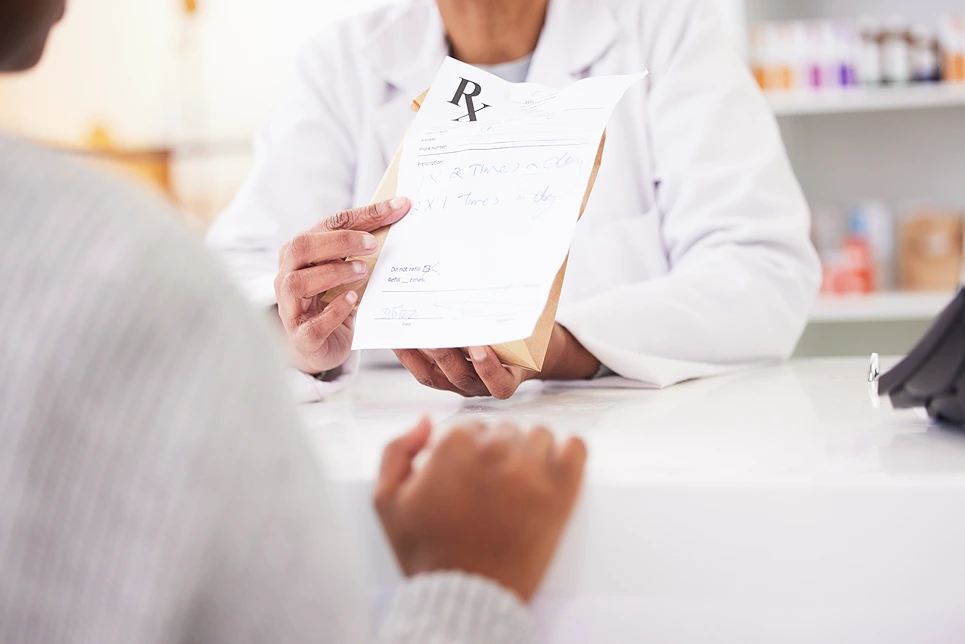
With the variety of OTC options for spider veins, how do you choose the right treatment? Here are a few factors to consider:
Location of Spider Veins
The location of your spider veins will impact the type of OTC treatment that will work best. Spider veins on the legs and thighs typically respond best to compression stockings, which provide gentle pressure to improve circulation. For spider veins on the face, chest or other areas, topical creams tend to be most effective.
Severity of Spider Veins
Mild spider veins may fade with regular use of moisturizers. More noticeable or advanced cases will require creams containing active ingredients like vitamin K, hydroxyethylrutosides or plant extracts specifically targeted for spider veins.
Skin Sensitivity
Those with sensitive skin often have better results using natural, gentle creams versus stronger chemical formulations containing retinoids or alpha-hydroxy acids, which can cause irritation. Look for creams with soothing ingredients like aloe, shea butter, calendula etc.
Convenience
Topical creams only require a few minutes per day to apply, while compression stockings involve consistent wear during waking hours. This may factor into your treatment decision.
Budget
Topical creams tend to be more expensive than compression stockings for an ongoing treatment plan, but cheaper than prescription medications or supplements taken long-term. Compare cost per use.
Other Health Factors
Those on blood thinners or medications that impact circulation or skin health should always consult their doctor before beginning OTC spider vein treatments, including supplements.
Discuss your specific needs and circumstances with a healthcare professional to determine the ideal OTC spider vein treatment plan. Consult with the Vein Center Doctor!
Potential Side Effects of OTC Treatments
When used properly, OTC spider vein treatments don’t typically cause side effects. However, a few things to keep in mind:
- Topical creams with harsh chemicals may irritate sensitive skin. Do a patch test before applying to a larger area.
- Improperly fitted compression stockings can restrict circulation. Consult with a vein specialist for proper sizing.
- Certain supplements may interact with medications or exacerbate health conditions, so check with your doctor.
- Overuse of OTC treatments rarely improves efficacy and may increase the risk of adverse effects.
Mild side effects like skin irritation, leg cramps, headache, and nausea typically resolve quickly when treatment is stopped. Seek medical help if worrisome reactions develop.
Knowing When to Seek Medical Treatment
While OTC options can enhance the appearance of spider veins, they aren’t able to eliminate them completely in many cases. If you’ve tried OTC treatments consistently for 6 months without satisfactory improvement, it may be time to consider medical procedures.
Signs that indicate the need for professional spider vein treatment include:
- Spider veins keep worsening or spreading
- Significant discomfort, aching, burning, or itching
- Swelling, heaviness, numbness, or tingling in legs
- Skin discoloration or ulcers near spider veins
- Bleeding, inflammation, or infection of spider veins
Today’s medical treatments for spider veins are minimally invasive, highly effective, and provide dramatic improvements not possible through OTC options alone. Popular procedures offered at Vein Center Doctor include:
1. Sclerotherapy
This is the most common treatment for spider veins. It involves injecting a saline or chemical solution directly into the affected vein. The solution irritates the lining of the blood vessel, causing it to swell and stick together. Over time, the vein turns into scar tissue that fades from view. Multiple sessions may be required to treat all of the spider veins in an area.
2. VenaSeal
This is a relatively new procedure that uses a medical adhesive to close spider veins. It is non-thermal, meaning it does not use heat. It is also non-tumescent, so no fluids are injected to swell the veins before treatment. The adhesive is injected directly into the vein through a small catheter. It bonds the vein walls together, sealing it closed. The closed vein is eventually absorbed into the body.
3. Venous Compression Therapy
This non-invasive treatment applies gentle pressure to the affected area with compression stockings or other devices. The external pressure helps improve blood flow in the veins, decreases vein inflammation, and reduces bulging of spider veins. It can provide symptom relief but does not eliminate spider veins.
4. Radiofrequency Ablation (RFA) for Varicose Veins
RFA uses radiofrequency energy to generate heat. It is done by inserting a small catheter into the varicose vein and heating the tip, which causes the vein walls to collapse and seal shut. Blood flow is redirected from the closed varicose vein to other healthy veins. RFA is done as an outpatient procedure and typically does not require downtime. Multiple veins may be treated in one session.
Discuss your candidacy for these advanced spider vein procedures during an initial consultation with one of our board-certified vein specialists at Vein Center Doctor.
Get Professional Spider Vein Treatment from Vein Center Doctor
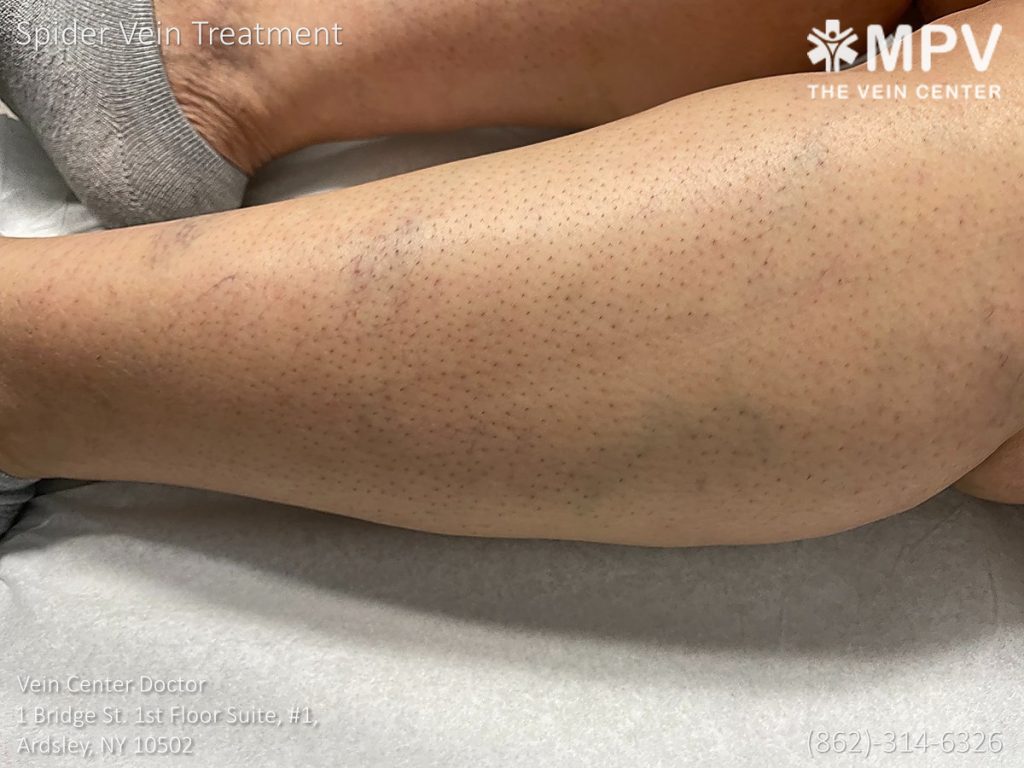
While over-the-counter treatments can help reduce the appearance of spider veins, medical procedures are often required for more significant improvement. If OTC options haven’t resolved your spider veins after 6 months of consistent use, it may be time to explore minimally invasive treatments.
Schedule a consultation with the vein experts at Vein Center Doctor today to discuss advanced spider vein removal options and regain confidence in your skin. Contact us now to book your appointment with our experienced vein specialists!
Dr. Sood at Vein Center Doctor is always happy to offer free consultations to anyone looking to understand their vein issues. Don’t spend another day wondering how to make those visible veins go away. Call us at 862-227-1143 today!

